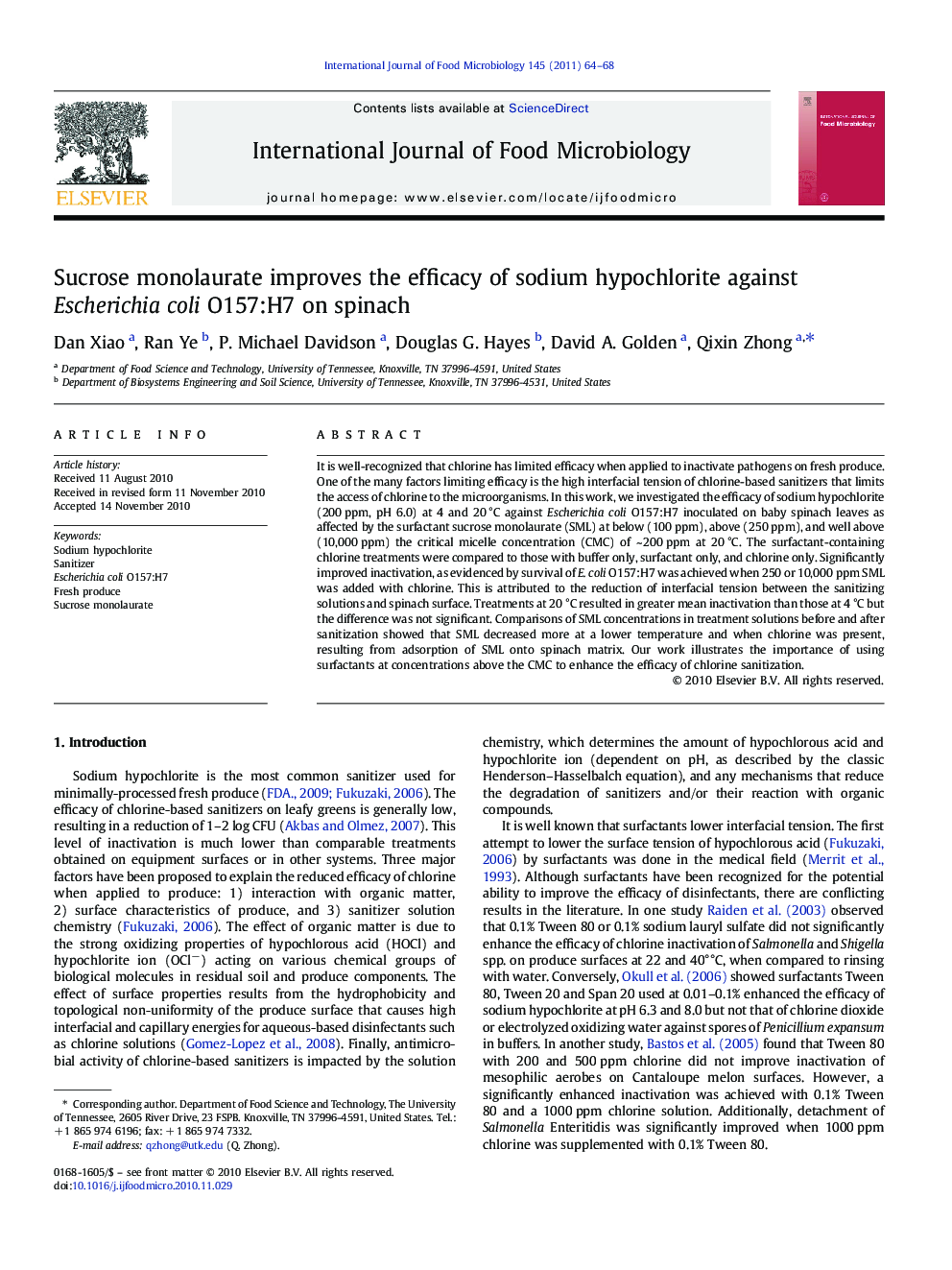| کد مقاله | کد نشریه | سال انتشار | مقاله انگلیسی | نسخه تمام متن |
|---|---|---|---|---|
| 4368725 | 1616674 | 2011 | 5 صفحه PDF | دانلود رایگان |

It is well-recognized that chlorine has limited efficacy when applied to inactivate pathogens on fresh produce. One of the many factors limiting efficacy is the high interfacial tension of chlorine-based sanitizers that limits the access of chlorine to the microorganisms. In this work, we investigated the efficacy of sodium hypochlorite (200 ppm, pH 6.0) at 4 and 20 °C against Escherichia coli O157:H7 inoculated on baby spinach leaves as affected by the surfactant sucrose monolaurate (SML) at below (100 ppm), above (250 ppm), and well above (10,000 ppm) the critical micelle concentration (CMC) of ~ 200 ppm at 20 °C. The surfactant-containing chlorine treatments were compared to those with buffer only, surfactant only, and chlorine only. Significantly improved inactivation, as evidenced by survival of E. coli O157:H7 was achieved when 250 or 10,000 ppm SML was added with chlorine. This is attributed to the reduction of interfacial tension between the sanitizing solutions and spinach surface. Treatments at 20 °C resulted in greater mean inactivation than those at 4 °C but the difference was not significant. Comparisons of SML concentrations in treatment solutions before and after sanitization showed that SML decreased more at a lower temperature and when chlorine was present, resulting from adsorption of SML onto spinach matrix. Our work illustrates the importance of using surfactants at concentrations above the CMC to enhance the efficacy of chlorine sanitization.
Research Highlights
► Impact of sucrose monolaurate (SML) on efficacy of NaOCl against E. coli O157:H7 was studied.
► From in vitro (in growth medium) tests, SML alone did not show antimicrobial activity.
► From in vitro tests, SML did not reduce the NaOCl concentration needed to inhibit microbial growth.
► From in vivo (on spinach) tests, the efficacy of NaOCl was improved at 250 and 10,000 ppm but not 100 ppm.
► Surface tension of produce is related to improved sanitization efficacy of NaOCl by SML.
Journal: International Journal of Food Microbiology - Volume 145, Issue 1, 31 January 2011, Pages 64–68